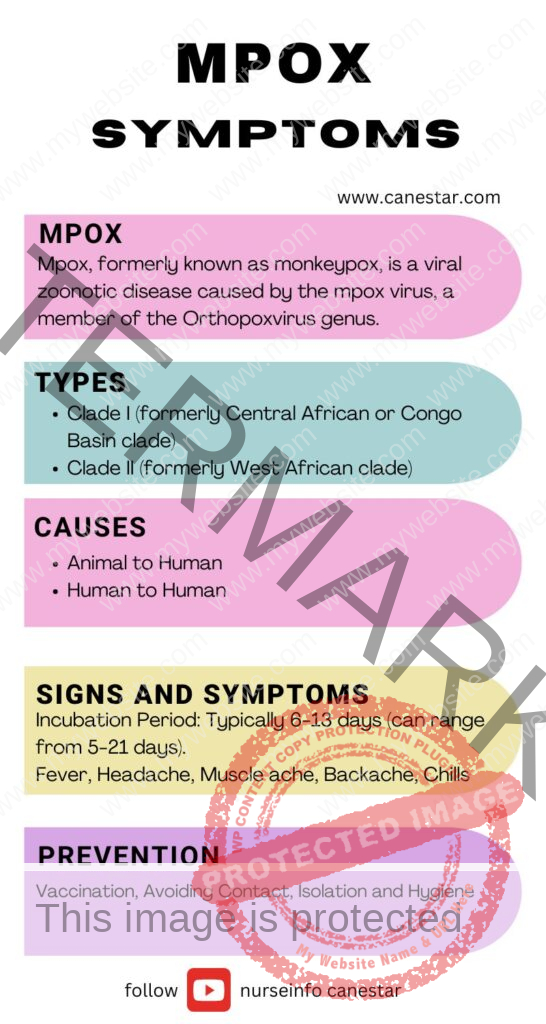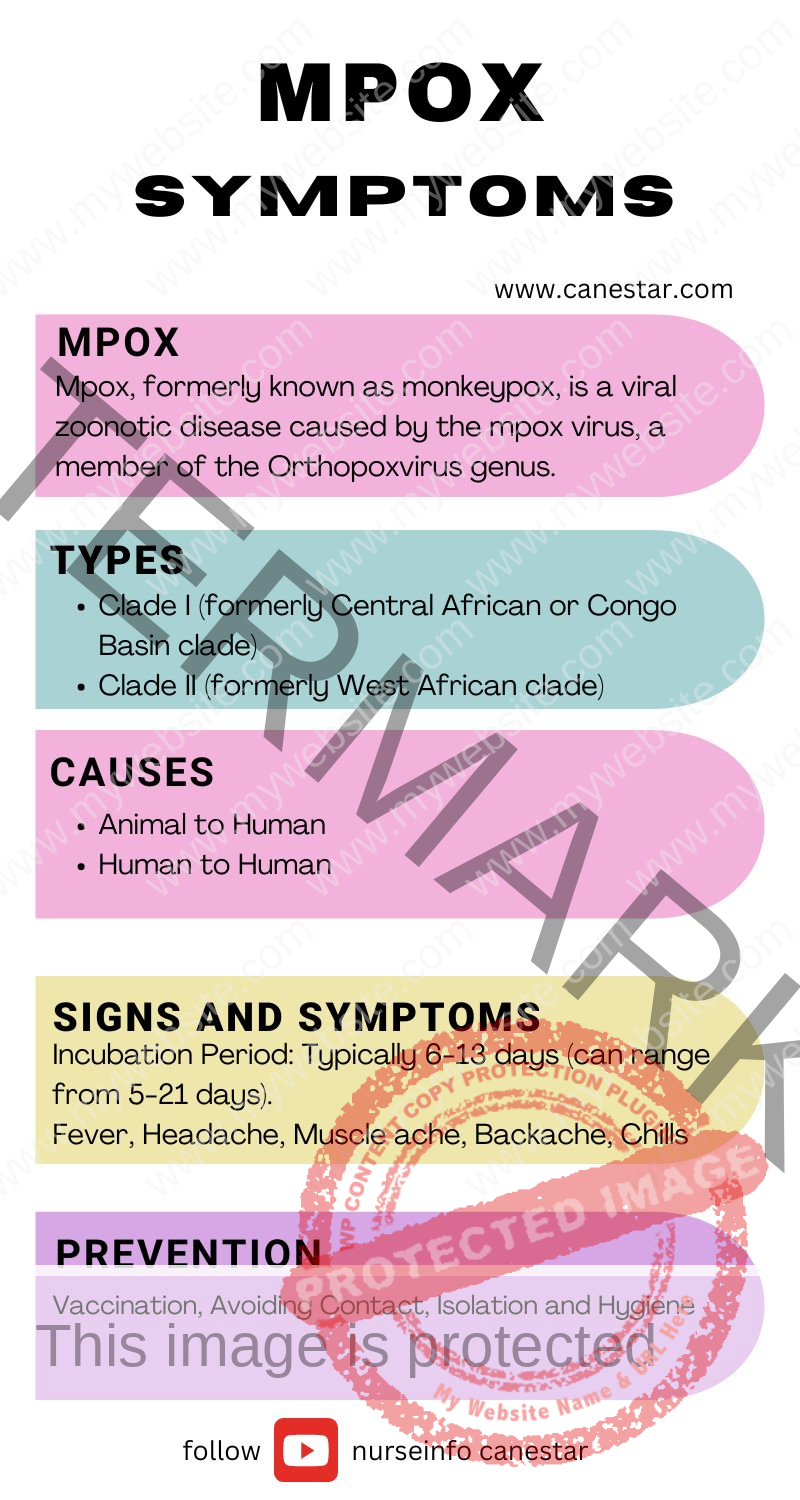Mpox – Definition, types, causes, signs and symptoms, diagnosis, treatment and prevention
Mpox – Definition, types, causes, signs and symptoms, diagnosis, treatment and prevention
Mpox: Overview
Definition:
Mpox, formerly known as monkeypox, is a viral zoonotic disease caused by the mpox virus, a member of the Orthopoxvirus genus. It is similar to smallpox but generally less severe.
Types
- Clades: There are two main clades (genetic groups) of the mpox virus:
Clade I (formerly Central African or Congo Basin clade): More severe with higher mortality rates.
Clade II (formerly West African clade): Less severe and more common.
Causes
- Transmission: The mpox virus spreads through:
Animal-to-human: Direct contact with the blood, bodily fluids, or skin lesions of infected animals, primarily rodents or primates.
Human-to-human: Close contact with respiratory secretions, skin lesions, or contaminated objects. It can also spread through respiratory droplets during prolonged face-to-face contact and, less commonly, via sexual contact.
Signs and Symptoms
- Incubation Period: Typically 6-13 days (can range from 5-21 days).
- Initial Symptoms:
Fever
Headache
Muscle aches
Backache
Swollen lymph nodes (lymphadenopathy)
Chills
Exhaustion
- Rash Development: Begins 1-3 days after the onset of fever, often starting on the face and then spreading to other parts of the body. The rash evolves through stages—macules, papules, vesicles, pustules, and scabs.
Diagnosis
- Clinical Evaluation: Based on symptoms, especially the characteristic rash and history of exposure.
- Laboratory Tests:
PCR (Polymerase Chain Reaction): The preferred method for detecting the mpox virus using samples from skin lesions.
Blood tests: Less reliable due to transient and low levels of viremia.
Treatment
- Supportive Care: There is no specific treatment for mpox; care focuses on relieving symptoms and preventing complications.
- Antiviral Medications: In severe cases, antivirals like tecovirimat (approved in some regions for smallpox) might be considered.
- Vaccination: The smallpox vaccine, particularly the newer versions, can provide some protection against mpox.
Prevention
- Vaccination: Smallpox vaccines (e.g., JYNNEOS/Imvanex/Imvamune) can be used for prevention in high-risk groups.
- Avoiding Contact: Minimize exposure to animals that may carry the virus, especially in endemic regions.
- Isolation: Infected individuals should be isolated to prevent the spread.
- Hygiene: Regular handwashing with soap and water or using alcohol-based hand sanitizers, especially after contact with infected individuals or animals.
Conclusion
Mpox, while less severe than smallpox, requires careful management and prevention strategies to control outbreaks and minimize the spread. Public health measures, awareness, and vaccination are key components in combating this disease.

Disclaimer: This information is given for educational purpose. This information is provided for educational and informational purposes only and does not constitute providing medical advice or professional services. The information provided should not be used for diagnosing or treating a health problem or disease, and those seeking personal medical advice should consult with a licensed physician. Always seek the advice of your doctor or other qualified health provider regarding a medical condition.

